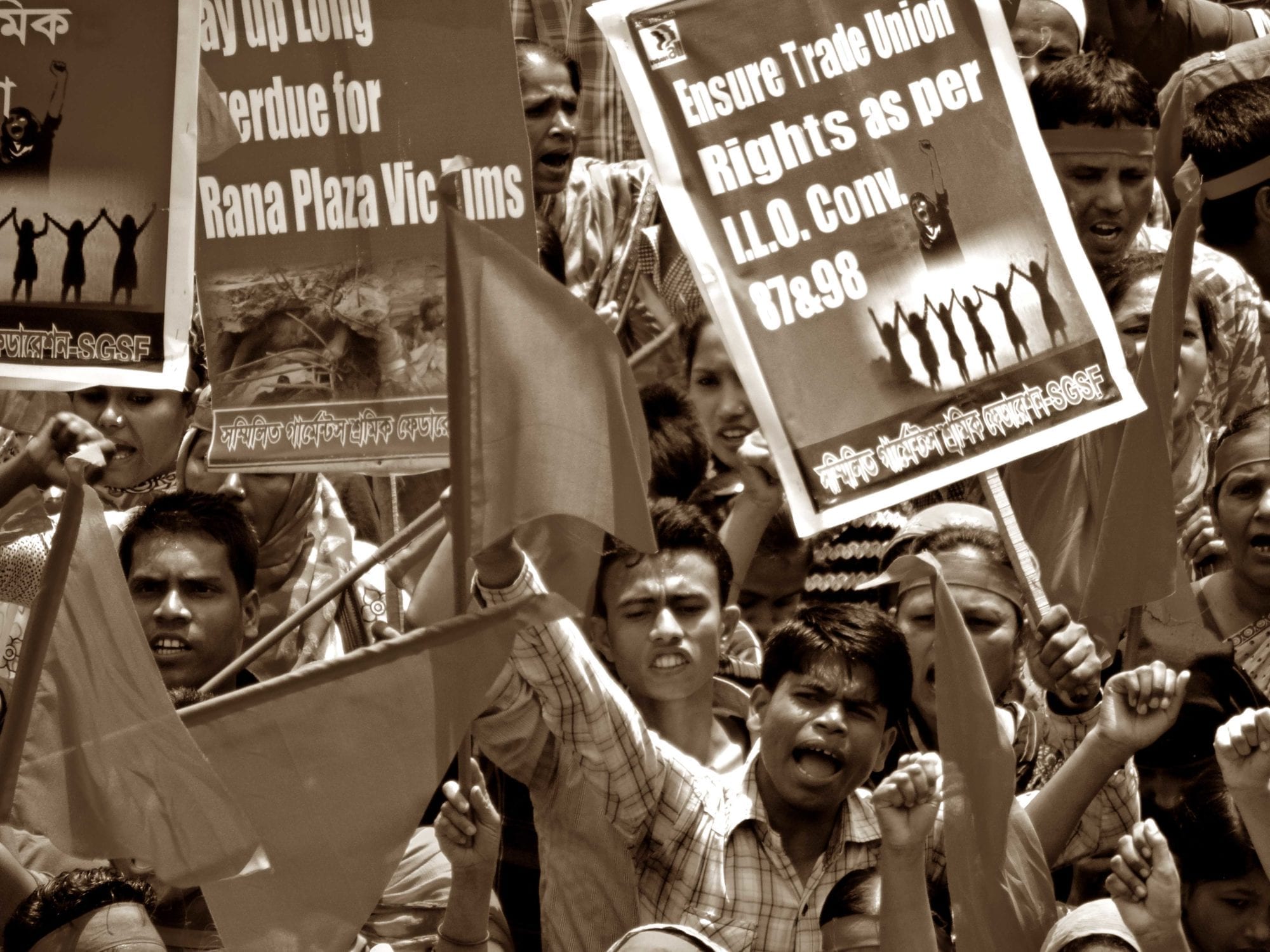Tens of thousands of Bangladesh garment workers waged weeks-long strikes in December and January to protest low wages and unequal pay increases—and now workers say factory employers are using the walkouts to further repress their efforts to form unions and collectively bargain better wages and working conditions.
More than 11,000 garment workers have lost their jobs or faced repression as a result of the wage protests, and employers and the police have filed cases against more than 3,000 workers, according to the global union IndustriALL. Many workers fired say they were not involved in the protests.
During the walkouts, police used tear gas, water cannons, batons and rubber bullets, reportedly injuring dozens of workers and killing 22-year-old Sumon Mia, a worker at Anlima Textile in Savar, who was shot dead on his way back to work from lunch.
Billboards with names and photographs of terminated workers have been posted at some factories as an intimidation tactic, and union leaders say factory management is exploiting the walkouts to target and blacklist them from employment in the sector.
Factory walkouts began the second week of December, when mostly nonunion garment workers from roughly 350 factories in Gazipur, Ashulia and Narayanganj protested the elimination of the 5 percent annual wage increase for 2018 and a basic wage increase applied unequally to workers with various skill levels.
Recent Repression of Worker Rights Part of Longer Trend
Following the deaths of more than 1,200 garment workers in the 2012 fire at the Tazreen Fashions factory and the 2013 Rana Plaza building collapse, workers vigorously organized to form unions and negotiate contracts, as the Bangladesh government and ready-made garment (RMG) employers responded to international pressure to improve safety and wages.
But in recent years, employer harassment—including physical attacks and threatening home visits—and government resistance to workers seeking to register unions have meant even fewer workers can join together to collectively improve their workplaces. As recently as November 2018, two union organizers were brutally attacked by men associated with factory management, according to union leaders.
At the same time, Bangladesh’s highest court threatens the expulsion of the Accord on Fire and Building Safety in Bangladesh established after the Rana Plaza disaster. The legally binding agreement between hundreds of primarily European corporate retail brands and unions conducted safety inspections at more than 1,000 factories and educated workers on safety and other workplace rights.
Bangladesh is the biggest producer of garments in the world after China, with apparel exports totaling more than $30 billion last fiscal year. Although the Bangladesh RMG industry is by far the country’s biggest export earner, wages remain the lowest among major garment-manufacturing nations. Yet the cost of living in Dhaka is equivalent to that of Montreal.

